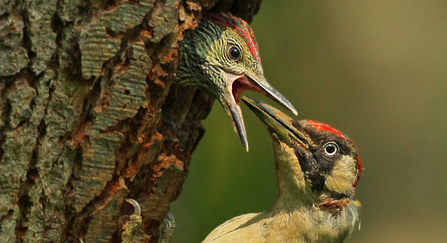
WildNet - Jon Hawkins - Surrey Hills Photography
(c) Andrew Mason

WildNet - Jon Hawkins - Surrey Hills Photography
Our largest woodpecker is olive green, with a yellow rump and red crown. Despite (or perhaps because of) this startling colour combination, it can be difficult to spot either in the tree canopy or amongst ground foliage hunting for ants. Its wild, looping, laughing call is distinctive and seems to come from all directions at once.
An old country name for the green woodpecker is the 'Yaffle' because of the laughing sounds it makes. Professor Yaffle, a character in the classic children's programme Bagpuss, was loosely based on the green woodpecker. Two old Yorkshire names – hefful and heffalk – are also references to its call.
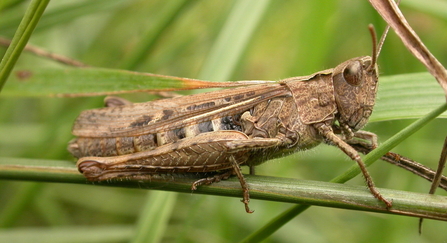
WildNet - Philip Precey
The common field grasshopper can be found in sunny, grassy areas (particularly gardens) throughout summer. Mottled brown in colour, it can be difficult to spot in the long grass. Its “song” – a brief, single chirrup, endlessly repeated at short intervals – is made by the male rubbing his legs along his wings to attract females. They can be heard from June onwards.
There are about 25,000 species of Orthopteroids (the order of insects that grasshoppers and crickets belong to) worldwide. In the UK, there are 11 native species of grasshopper including the common field grasshopper - but about 30 species actually live and breed here.
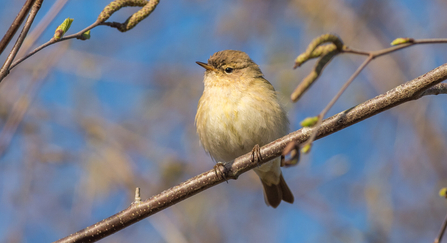
Janet Packham - Janet Packham Photography
The chiffchaff is an unassuming little bird, mostly olive green in colour with a pale yellow belly. Some individuals are resident, but most migrate and arrive in the UK in late February. Although seldom seen, it is often heard. It is a bird of woodland, park and garden, sitting high in the tree canopy, repeating its two note chiff chaff chiff chaff chiff chaff song over and over.
Chiffchaffs nest on (or close to) the ground, hidden among brambles or nettles. Their domed nests are built by the females out of stems and leaves, and lined with feathers.
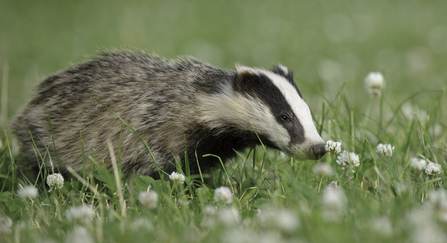
WildNet - Andrew Mason
The largest UK member of the weasel family, this stocky, monochrome mammal now has populations in many of our towns and cities. Noises appear to play a key role in badger interaction – researchers have identified 16 distinct calls: bark, chirp, chitter, churr, cluck, coo, growl, grunt, hiss, kecker, purr, snarl, snort, squeak, wail, and yelp.
Badgers can eat several hundred earthworms a night, using their strong front paws to dig through the earth. They are also one of the only predators of hedgehogs - their thick skin and long claws help them to get past the vicious spines. If food is in short supply, badgers will forage during the day as well as at night. If there are badgers nearby, you can tempt them into your garden by leaving peanuts out - a tasty snack for our striped friends.
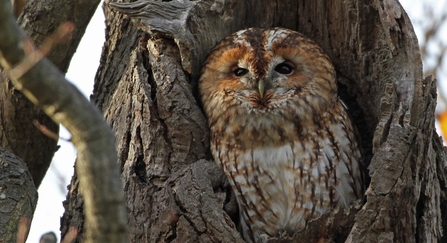
WildNet - Margaret Holland
Our largest native owl, and almost exclusively nocturnal. By day, your best chance is being alerted to one roosting up against a tree trunk by scolding, mobbing jays. Otherwise, your owl encounter is likely to be entirely aurul. Its famous 'twit twoo' call is actually two separate individuals. The female makes a 'ke-wick' sound and the male answers with something more like 'hoo-hoo-oo'.
Like other owls, tawny owls can famously turn their head through 270 degrees and are able to look behind them. Although owls have binocular vision, their forward-facing eyes cannot move in their sockets, so they must turn their heads instead.
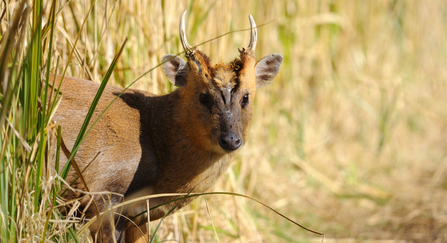
WildNet - Amy Lewis
This very small, stocky deer is about the same size as a medium dog. Its size and preference for thick cover enables it to adapt to suburban habitats. One of our smallest deer, it is also one of our most vocal – the fox-like bark can be alarming at night if you unfamiliar with it.
At least seven species of Muntjac are known, from Pakistan to Java and China. Two species were actually introduced into the UK, but the one that got cosy here is the Reeves' Muntjac. Although their initial escape was from Woburn Park in Bedfordshire, they have now been recorded as far north as County Durham.